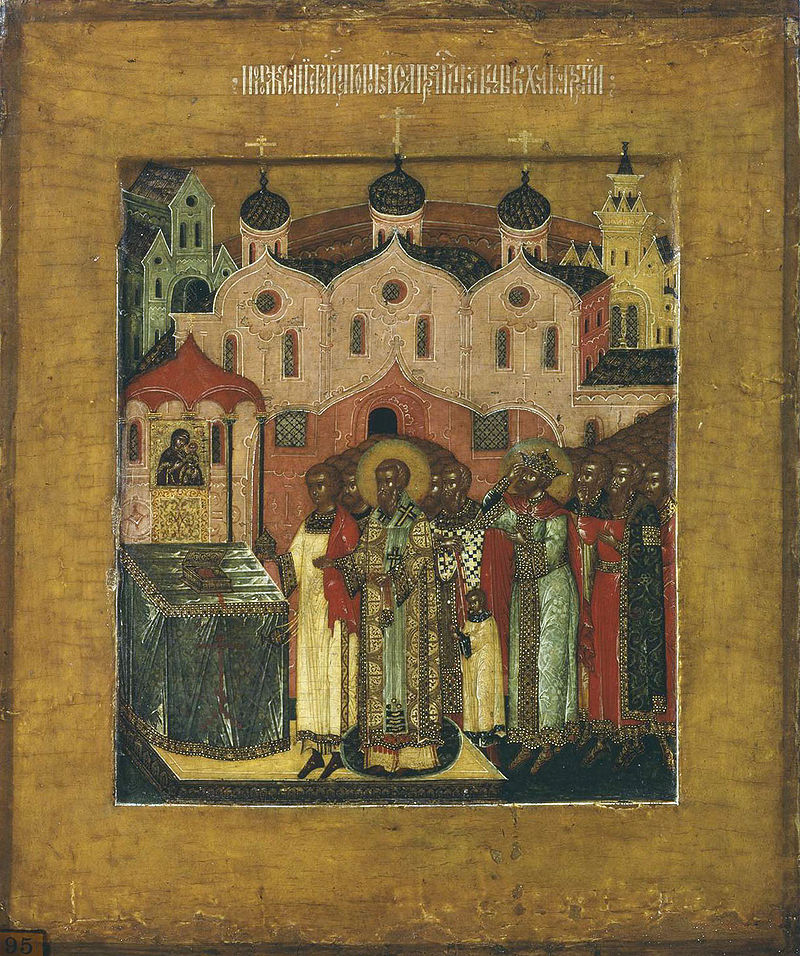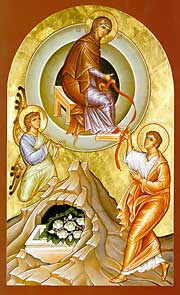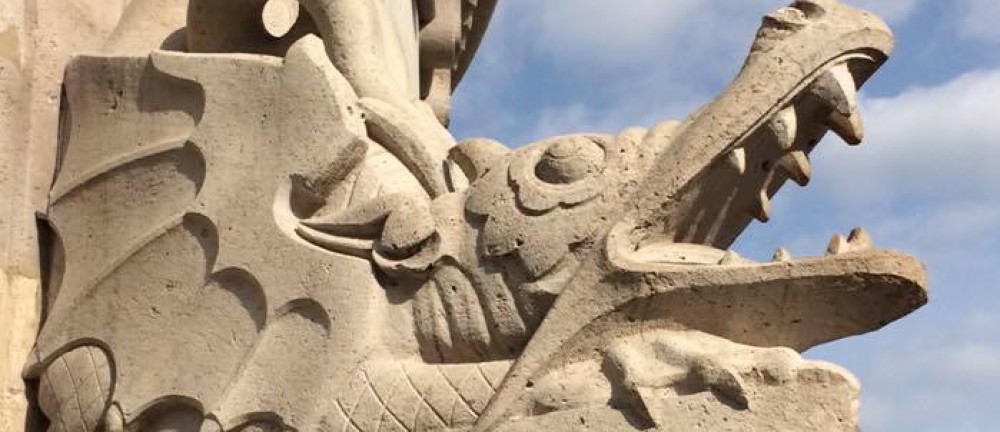
A 17th-century Russian icon of the Deposition of the Sash of the Mother of God.
July 2 has long been a feast day of the Mother of God in both the Eastern and Western Churches although the feasts each had a somewhat different emphasis.
According to legend, the Mother of God died and was buried by the apostles in a tomb in Jerusalem. Three days later, Thomas the Apostle, who had been delayed and unable to attend the funeral, arrived and asked to have one last look at the Virgin Mary. When he and the other apostles arrived at Mary’s Tomb, they found that her body was missing. According to some accounts, the Virgin Mary appeared at that time and gave her belt (also called sash or cincture) to the Apostle Thomas. Another version of the story recounts how the Mother of God gave her sash to one of the women tending her as she was dying and the sash was passed down in that woman’s family from generation to generation.
Traditionally, the sash was reportedly made by the Virgin Mary herself, out of camel hair. Whether it was given to St. Thomas or the woman tending the dying Virgin, the sash was kept at Jerusalem for many years. It was brought to Constantinople in the 5th century, together with the robe of the Virgin Mary. The robe and the sash were both deposited in the Church of St. Mary at Blachernae. The sash was embroidered with gold thread by the Empress Zoe, the wife of Emperor Leo VI, in gratitude for a miraculous cure. The anniversary of this deposition of the sash of the Mother of God at Blachernae is celebrated every year by the Orthodox Church on July 2.
Later, the Emperor John VI Kantakouzenos (1347–1355) donated the sash to the monastery of Vatopedi on Mount Athos, where it remains to this day. (I was given a relic of the sash on Mt. Athos by a good friend of mine; I highly prize it. I have also been given a small stone from Golgotha by a parishioner and a small stone from the tomb of the Mother of God in Jerusalem as an ordination gift.)
July 2 was the traditional date for the Western Church to celebrate the Visitation of the Mother of God and St. Elizabeth, the mother of John the Baptist (Luke 1:39-57). Feeling the presence of his Christ in the womb of Mary, John, in the womb of his mother Elizabeth, jumped with excitement. Elizabeth greeted her cousin Mary as “the Mother of my Lord,” realizing that the baby was not just kicking in her womb for no reason. (Many western Christians moved the Visitation feast to May 31 in 1969.) Keeping the Visitation on July 2, however, strikes me as a fitting way to promote unity between Eastern and Western Christians and to foster goodwill among the adherents of a common, “mere” Christianity.
Read more about the Visitation here and here. You can read more about the Deposition here. See Mere Christianity here.

A contemporary icon depicting the Mother of God giving her sash to St. Thomas the Apostle after her Dormition (Assumption).


